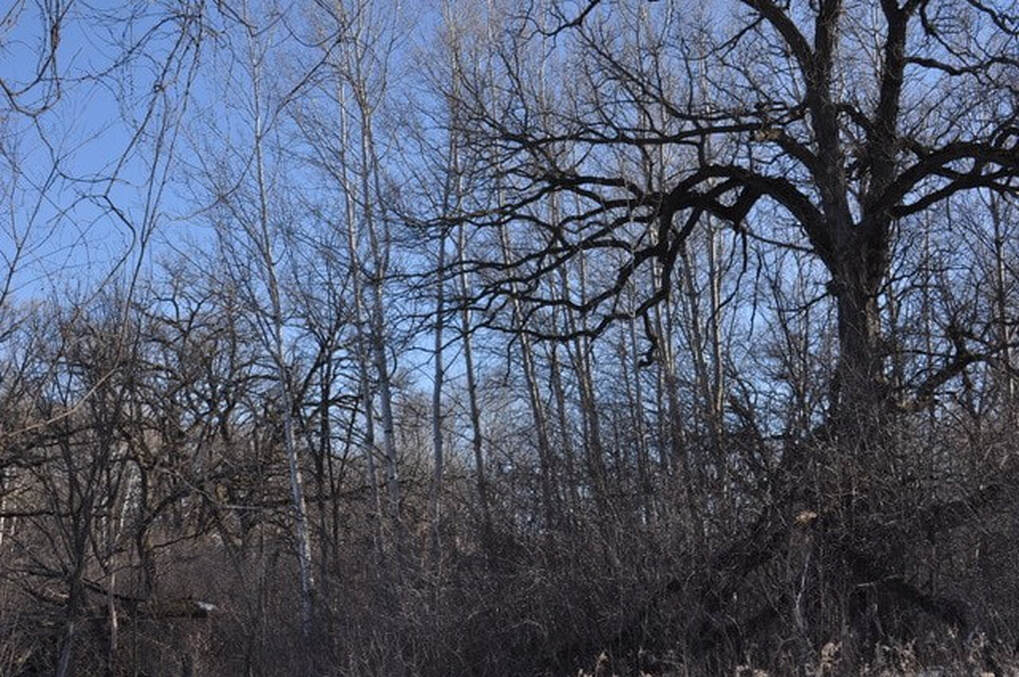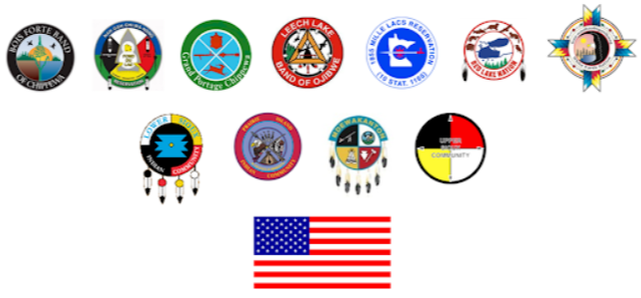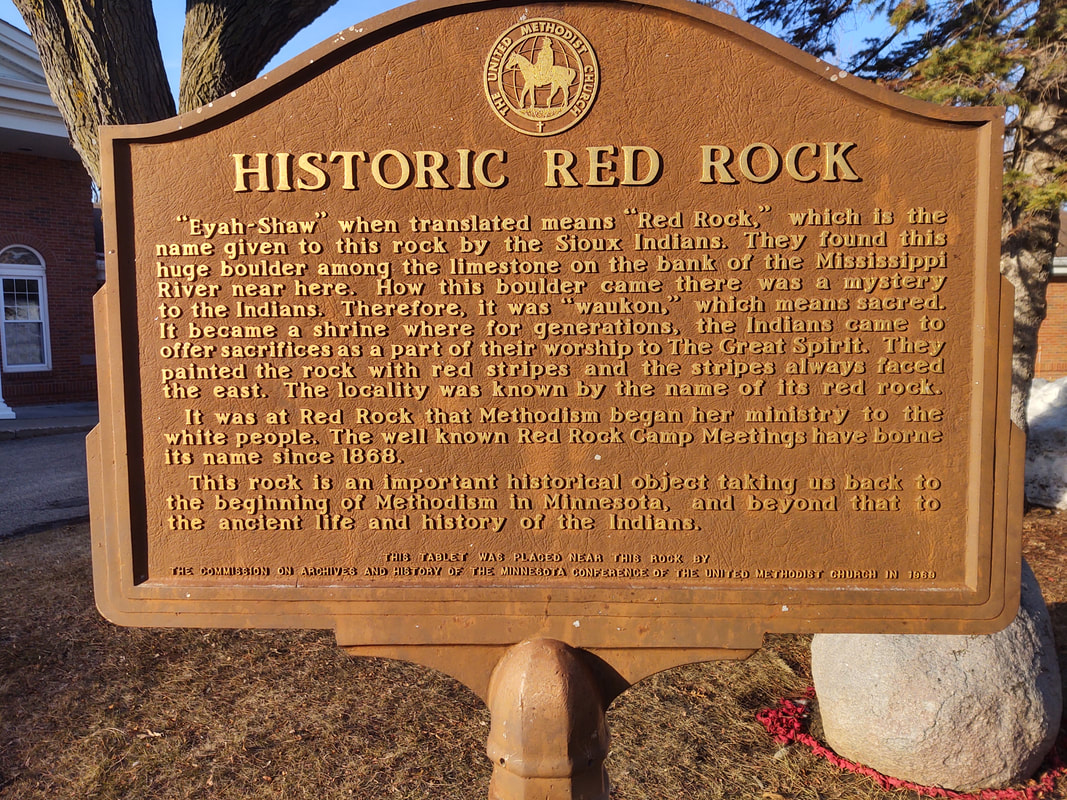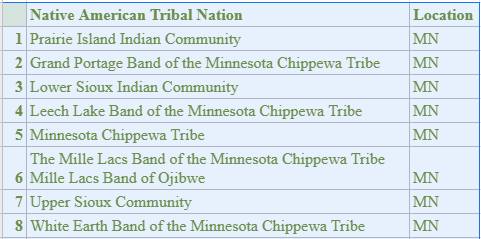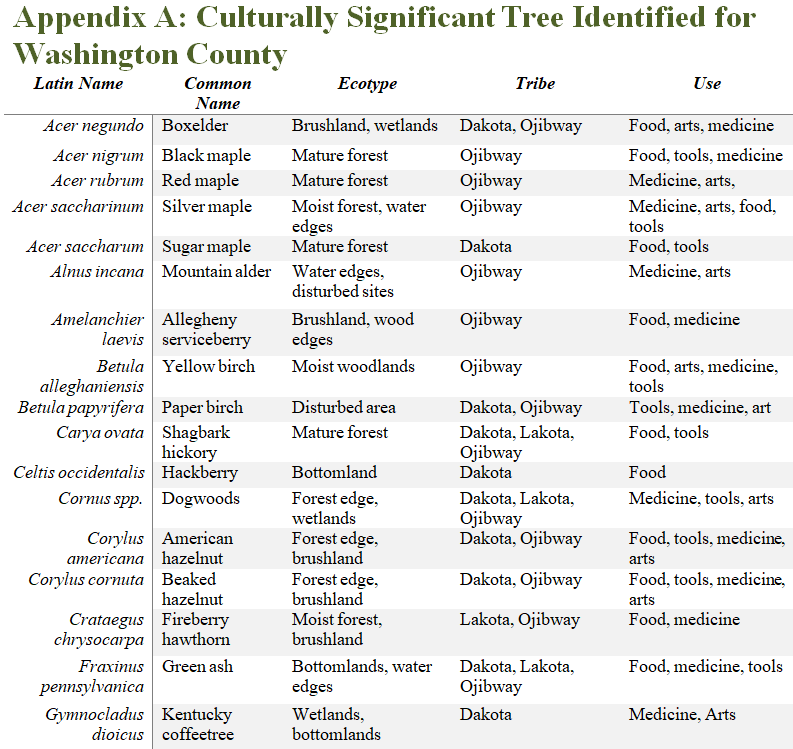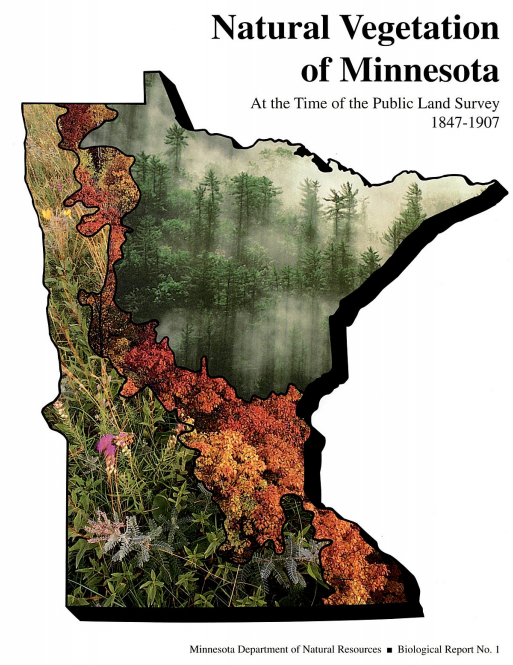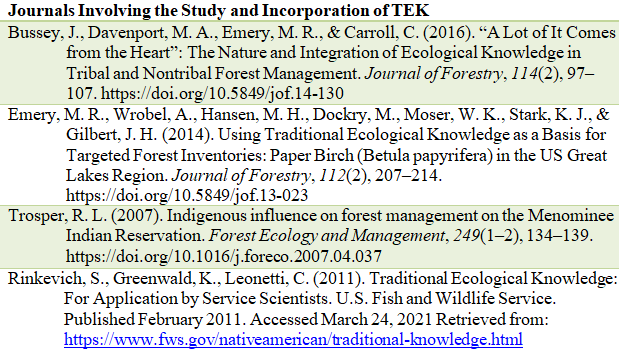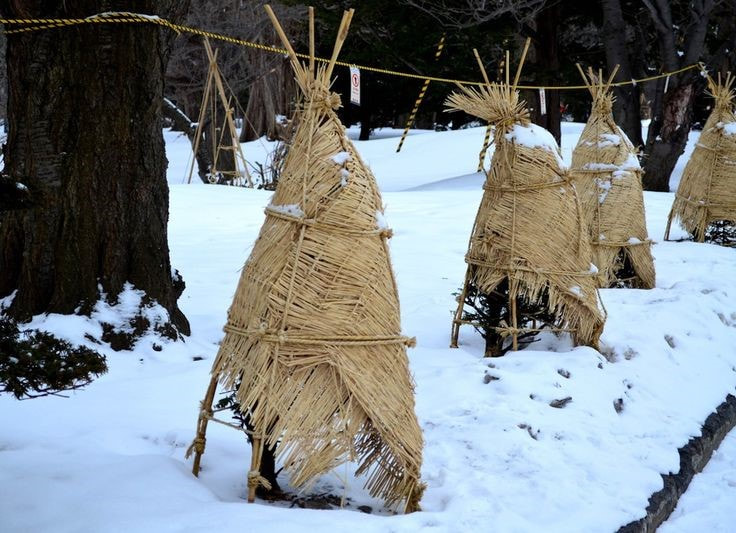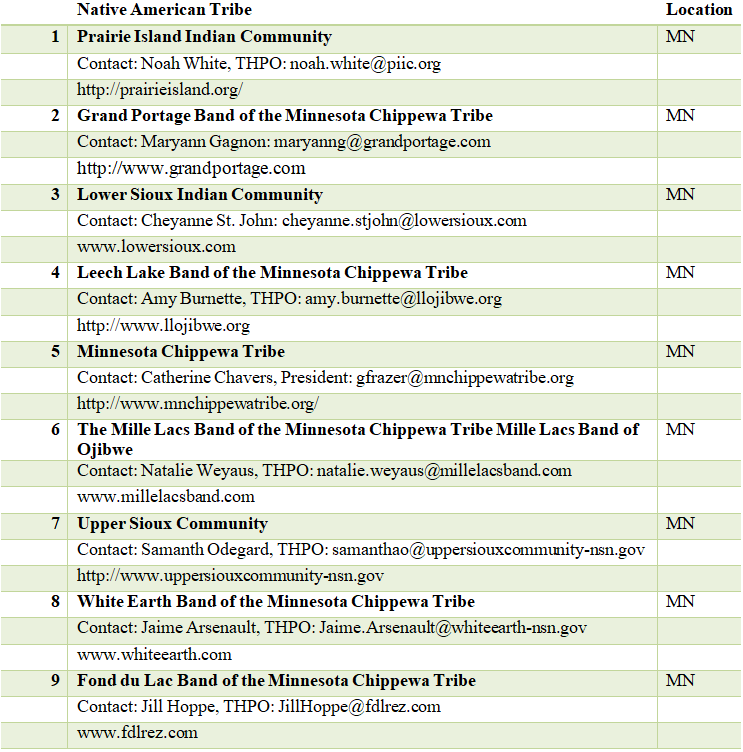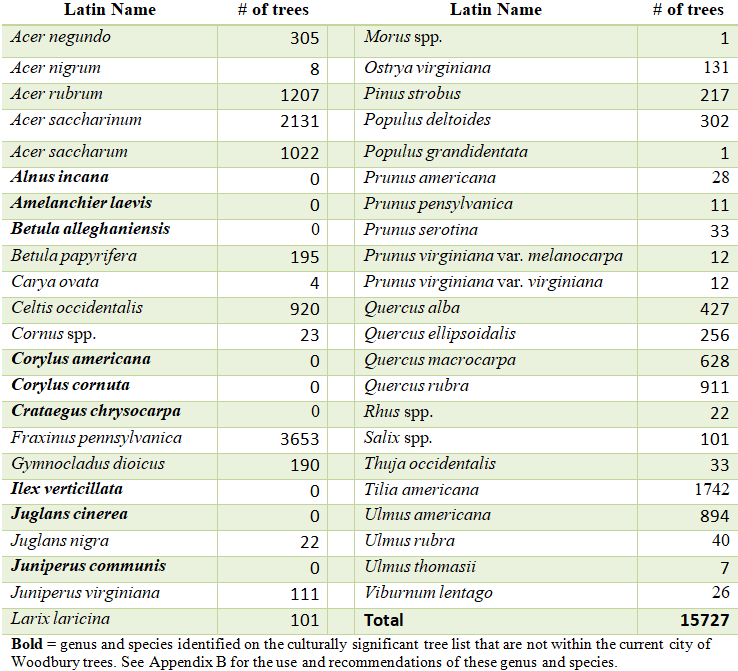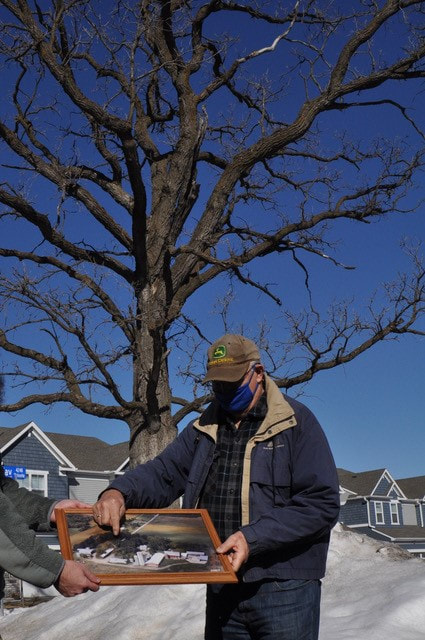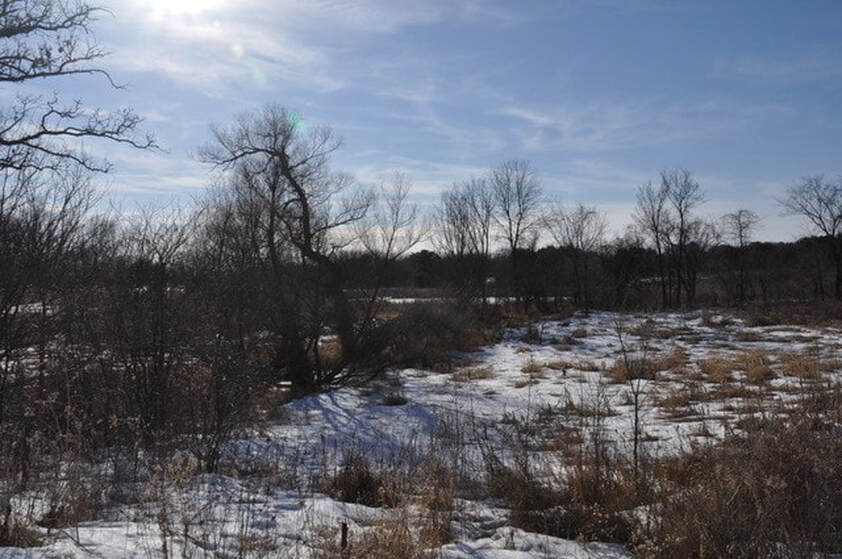Introduction
No matter how ordinary, all landscapes have cultural meaning. The heritage and significance of the landscape is dependent on the lens of the beholder. To achieve an inclusive urban forest equity, multiple perspectives and viewpoints should be considered Including the Native Americans who have occupied the land for thousands of years.
Tribal nations have called Minnesota home long before European settlement and have cultural and ancestral ties to the land, water, and tree resources. Thus, not only do Native tribes have a cultural connection to the land, but they also possess traditional ecological knowledge (TEK) that can and should be incorporated into modern day conservation management.
The City of Woodbury's Urban Canopy Management Plan could potentially benefit from TEK, as its Environmental Stewardship goal is:
Understanding that environmental health, economics and human wellbeing are interconnected and interdependent, Woodbury is committed to the responsible use and protection of all resources. To preserve our environment for future generations, the City will foster environmental stewardship through focused conservation, social responsibility and best management practices.
The environmental stewardship goal aims to create a sustainable future focusing on the environment, economy, and equity of human well-being. This Report is intended to be used as a guide for the city of Woodbury to inform heritage and cultural tree development, promote a diverse viewpoint, and provide a roadmap for inclusive collaboration with Native American tribal nations for incorporation in urban forestry planning. The report objectives are as follows:
· Provide an overview of the benefit of incorporating Traditional Ecological Knowledge (TEK) in the city of Woodbury’s urban tree canopy plan.
· Determine which Native American tribal nations have a cultural interest in Woodbury, MN and the significance of trees and natural resources.
· Provide a gap analysis of the existing tree canopy and tree species traditionally used by native tribes in Minnesota.
· Provide recommendations and next steps for incorporating TEK and collaborating with Native American tribes.
Findings
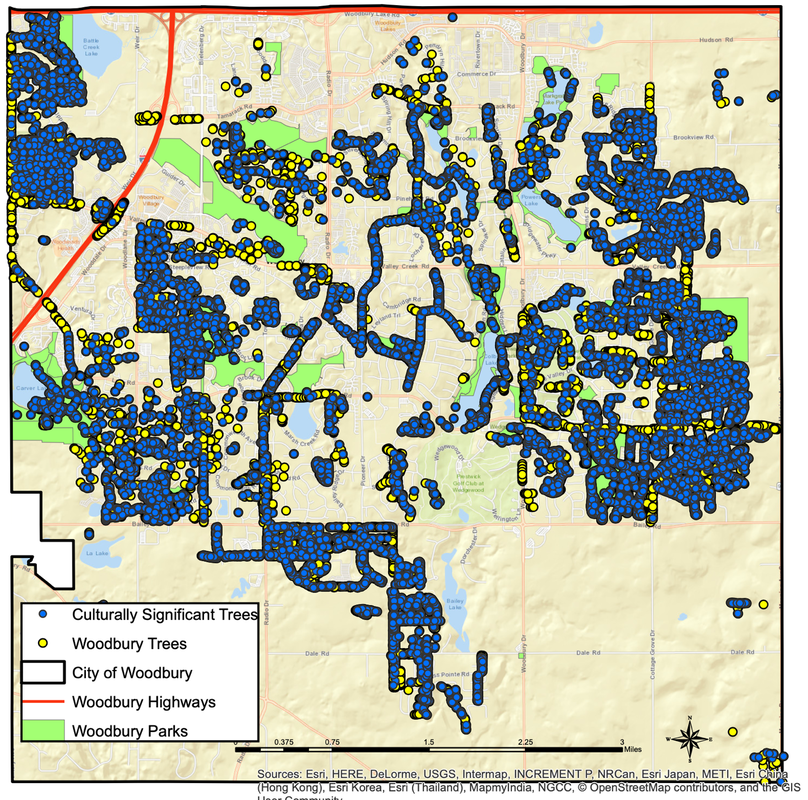 Tree inventory of Woodbury. Image credit: City of Woodbury
Tree inventory of Woodbury. Image credit: City of Woodbury
The area under consideration is the approximately 36 square miles and comprises low density residential, commercial and industrial land use along highway corridors, and largely undeveloped and agricultural land to the east of the city boundary (City of Woodbury Comprehensive Plan, 2020). The methods employed for this Report included a literature review of traditional ecological knowledge (TEK) and the benefits of adopting a native approach could provide the city of Woodbury. In addition, a review was provided for which Native American Tribes have a cultural/ancestral interest within Washington County, Minnesota, using the Tribal Directory Assessment Tool (TDAT) (https://egis.hud.gov/TDAT) provided by the Department of Housing and Urban Development. Finally, a gap analysis was performed from Woodbury’s existing tree canopy and native tree species that were traditionally used by tribes by comparing the Native American Ethnobotany Database (http://naeb.brit.org/ ), ecological biome databases, and Woodbury's tree inventory. In outreach best practices, multiple municipal plans were evaluated including the City of Portland, Seattle , Kirkland, WA., and the Indian Mounds Regional Park Cultural Landscape Study in St. Paul, MN.
The Tribal Directory Assessment Tool (TDAT) identified 23 tribal nations with cultural or ancestral ties to Washington County, MN. This information should be used as a baseline as not all of the tribes will have interest within the City of Woodbury. Table 1 lists Minnesota tribes that may have a cultural stake in Woodbury. For a full list of tribes from eight different states – eight tribal nations were identified for Minnesota, four in Wisconsin, three in South Dakota, two in Michigan and Oklahoma, and one in both North Dakota and Montana, click here- Table 1.1.
The Tribal Directory Assessment Tool (TDAT) identified 23 tribal nations with cultural or ancestral ties to Washington County, MN. This information should be used as a baseline as not all of the tribes will have interest within the City of Woodbury. Table 1 lists Minnesota tribes that may have a cultural stake in Woodbury. For a full list of tribes from eight different states – eight tribal nations were identified for Minnesota, four in Wisconsin, three in South Dakota, two in Michigan and Oklahoma, and one in both North Dakota and Montana, click here- Table 1.1.
Traditional Ecological Knowledge implementation requires a baseline of what species are native to the area. Combining native species with what is culturally important is the next step. A partial list of species can be found here in Table 2. For a full list click here for Table 2.1. To better understand what ecotypes existed in Washington county before European settlement, the Minnesota Department of Natural document Resources Natural Vegetation of Minnesota at the Time of the Public Land Survey, 1847-1907 is a good overview.
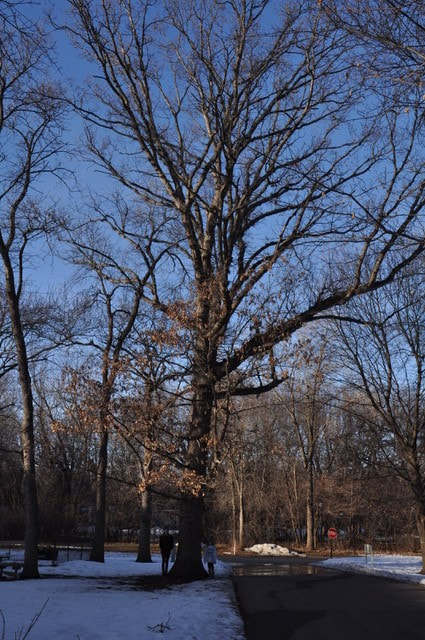 Approximately 250 year old bur oak on The Grove Methodist Church property. Photo: Ben Ziegler
Approximately 250 year old bur oak on The Grove Methodist Church property. Photo: Ben Ziegler
“Traditional ecological knowledge is a cumulative body of knowledge, practice, and belief, evolving by adaptive processes handed down through generations by cultural transmission, about the relationship of living beings (including humans) with one another and with their environment” (Berkes, 1999 p. 392)
Native American cultures live with the land and have an intimate knowledge of the intricate ecosystem. Building partnerships with tribes and incorporating TEK could be a healthier practice for the land than current western practices. Using TEK can help balance inputs and outputs to the system, allowing more effective natural ecosystem services to help clean and restore environments.
Traditional ecological knowledge encourages planners to think about the organisms within the landscape as co-beings rather than something to be dominated. By observing, recognizing, and adapting, sound decisions can be made for a sustainable management plan (Tribal Adaptation Menu team, 2019). Table 3 below, lists a sample of journal articles that were reviewed involving TEK.
Federal agencies that have been involved with implementing TEK include the U.S. Forest Service, the National Resource Conservation Service, and the U.S. Fish and Wildlife Service, and Tribal Historic Preservation Officers (THPO) from tribes with cultural interest in Washington County were contacted and asked if they would be interested in meeting for this project. To date, four interested tribes have responded with interest.
Recommendations and Outreach
 Table 4. Johnson and Dossett's Four Principles
Table 4. Johnson and Dossett's Four Principles
This Report found that 80% of Woodbury’s existing tree canopy genus/species comprise of culturally significant trees used by Ojibwe, Dakota, and Lakota. The management of the urban tree canopy would benefit from the incorporation of TEK. However, relationships must first be developed before knowledge can be shared. There is a long history of mistrust and negative impacts between the federal government, state agencies and tribal nations and this should not be overlooked.
Some steps that can be taken to build relationships and a stronger canopy are as follows:
Establish a tribal engagement strategy to start building that initial relationship using Johnson and Dossett's four principles for creating a healthy working relationship with tribal nations (Table 4). In addition to establishing internal engagement strategies, a next step could be to hire a cultural resource management consulting firm who has experience working with tribal nations.
Some steps that can be taken to build relationships and a stronger canopy are as follows:
Establish a tribal engagement strategy to start building that initial relationship using Johnson and Dossett's four principles for creating a healthy working relationship with tribal nations (Table 4). In addition to establishing internal engagement strategies, a next step could be to hire a cultural resource management consulting firm who has experience working with tribal nations.
The next recommendation would be to contact Native American tribes with interest in Woodbury’s urban tree canopy plan. The TDAT tool identified 23 tribal nations with cultural and ancestral ties to Washington County. Contacting Tribal Historic Preservation Officers (THPO) is a great place to start in gauging interest for a project. The list of tribal contacts for Minnesota is provided in Table 5, and clicking the table will give the full list related to the site.
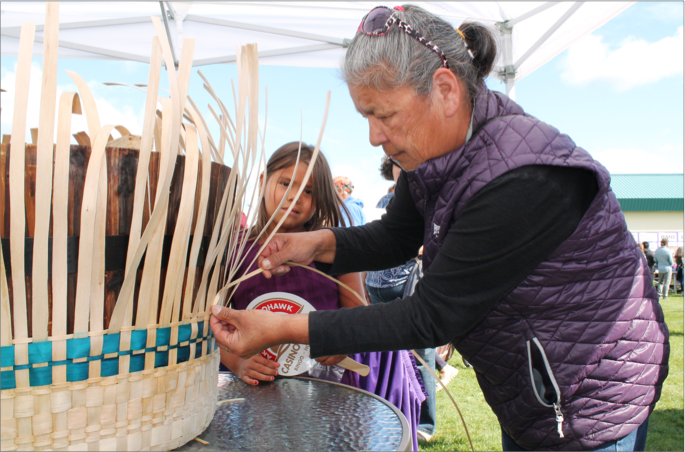 Photo credit: https://106group.com/
Photo credit: https://106group.com/
Another step would be to review other municipality acknowledgement and TEK implementation plans, such as Saint Paul, Minnesota and Portland, Oregon.
Once a relationship has been established, collaborative management plans can be created using TEK. A city can showcase this information by hosting events that show TEK methods and cultural uses of significant species that are sustainable and their rewards. Contact with the local Minneapolis American Indian Center may be helpful.
- City of Portland Parks and Recreation: Growing a more equitable urban forest: Portland’s citywide tree planting strategy (2018).
- City of Saint Paul: Indian Mounds Regional Park Cultural Landscape Study (2019
Once a relationship has been established, collaborative management plans can be created using TEK. A city can showcase this information by hosting events that show TEK methods and cultural uses of significant species that are sustainable and their rewards. Contact with the local Minneapolis American Indian Center may be helpful.
|
Finally, the city can use the gap analysis shown in Table 6, to plan a transitional phase where trees that may not be viable can be replaced by species that are more culturally and environmentally suited.
|
